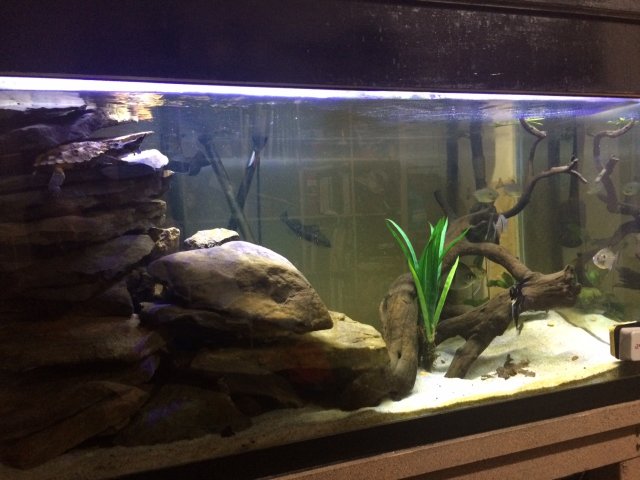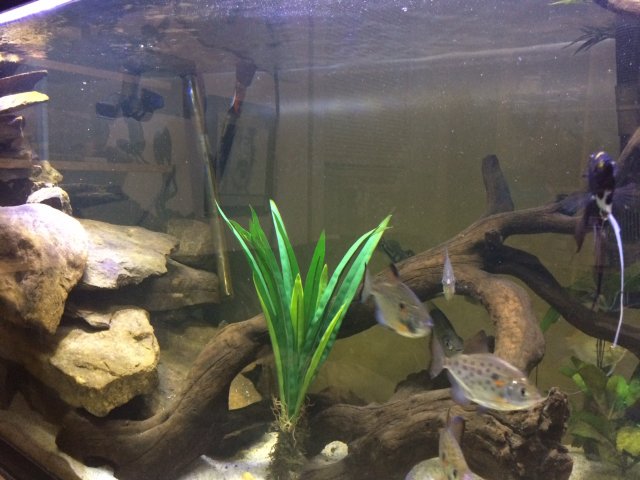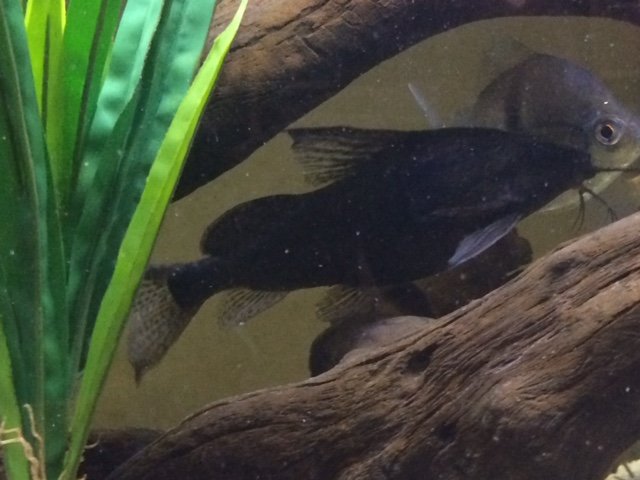This amazing amazon on springvale rd by any chance?a local shop i go to has a massive jardini, jungle perch, water dragon and both short/longneck and saw shell and kreffs...and they all live in harmony..i'll try n get pics
The MFKers Guide to Keeping Turtles and Fish Together
- Thread starter snakeguy101
- Start date
The information about mud turtles is great except for the part that says definitely that mud turtles do not require UV lighting because they live in black water where no UV penetrates...while it’s true UV rays would not pierce far into black water,mud turtle habitat is definitely not limited to or even necessarily more likely to be dark water...and the statement that they do no require UV exposure is no more a fact than it is to say that we have deciphered all there is to know about turtle care ...the idea that certain turtles don’t need UV lighting is a theory and nothing more it’s a little too widely accepted in my opinion to not have any more substantive data to back it...they bask regularly and in some cases do not even live in an area with an actual body of water but rather a marshy mud bog where they are often exposed to the sun but they also live in lakes and ponds and rivers and streams and creaks and swamps ....I have caught and released more wild specimens than I can remember and ALL of them while basking or foraging at the waters edge fully exposed to the sun...I am currently rehabbing a musk turtle that has as severe case of shell rot from to very poor husbandry ...and while it’s a best guess and part of a bigger picture of neglect ,my Herp vet has determined that the lack of a basking area and lack of UV lighting and poor water quality are the causative factors in this turtle horrible condition...treatment plan is a combination of daily cleansing of wounds followed by application of prescription strength topical antibiotics,followed by soaks in water treated with high amounts of tetracycline...and dry docking under uv lighting...the rate of recovery increased dramatically with the introduction of the UV exposure...this of course does not mean this experience can be called “proof” of anything...but it’s compelling and lined up with the natural behavior of these types of turtles...there isn’t a single species of aquatic turtle in North America that doesn’t bask...including alligator snapping turtles...why should they be doing this for any different reason than other species???uv lights are inexpensive and readily available...wouldn’t it be more responsible to tell readers that it is unclear if mud turtles require uv or not but to be safe,as we know it’s a need on some level or another,for all diurnal reptiles...to provide uv lighting as part of any aquatic turtle set up???
All turtle species regardless of wether fully or semiaquatic, need uvb light for long term health.The information about mud turtles is great except for the part that says definitely that mud turtles do not require UV lighting because they live in black water where no UV penetrates...while it’s true UV rays would not pierce far into black water,mud turtle habitat is definitely not limited to or even necessarily more likely to be dark water...and the statement that they do no require UV exposure is no more a fact than it is to say that we have deciphered all there is to know about turtle care ...the idea that certain turtles don’t need UV lighting is a theory and nothing more it’s a little too widely accepted in my opinion to not have any more substantive data to back it...they bask regularly and in some cases do not even live in an area with an actual body of water but rather a marshy mud bog where they are often exposed to the sun but they also live in lakes and ponds and rivers and streams and creaks and swamps ....I have caught and released more wild specimens than I can remember and ALL of them while basking or foraging at the waters edge fully exposed to the sun...I am currently rehabbing a musk turtle that has as severe case of shell rot from to very poor husbandry ...and while it’s a best guess and part of a bigger picture of neglect ,my Herp vet has determined that the lack of a basking area and lack of UV lighting and poor water quality are the causative factors in this turtle horrible condition...treatment plan is a combination of daily cleansing of wounds followed by application of prescription strength topical antibiotics,followed by soaks in water treated with high amounts of tetracycline...and dry docking under uv lighting...the rate of recovery increased dramatically with the introduction of the UV exposure...this of course does not mean this experience can be called “proof” of anything...but it’s compelling and lined up with the natural behavior of these types of turtles...there isn’t a single species of aquatic turtle in North America that doesn’t bask...including alligator snapping turtles...why should they be doing this for any different reason than other species???uv lights are inexpensive and readily available...wouldn’t it be more responsible to tell readers that it is unclear if mud turtles require uv or not but to be safe,as we know it’s a need on some level or another,for all diurnal reptiles...to provide uv lighting as part of any aquatic turtle set up???
Common snapping turtles need uvb
Alligator snappers need uvb
Mud and musks need uvb
Softshells and pig nose need uvb.
Even fully aquatic titles living in dark waters come to the waters surface regularly to get their uvb rays.
I am back to MFK!! Here is my South American setup with a young Mata Mata. PH is 6 and my fish are all happy that way!! the Pikes are new arrivals and the tail on one was damaged a bit...I got a great deal on them and it will heal!! The tank has 300lbs of rock formation providing a walk up for the turtle and caves for the pikes.....they may be fully aquatic but Mata Mata are poor swimmers!! Ken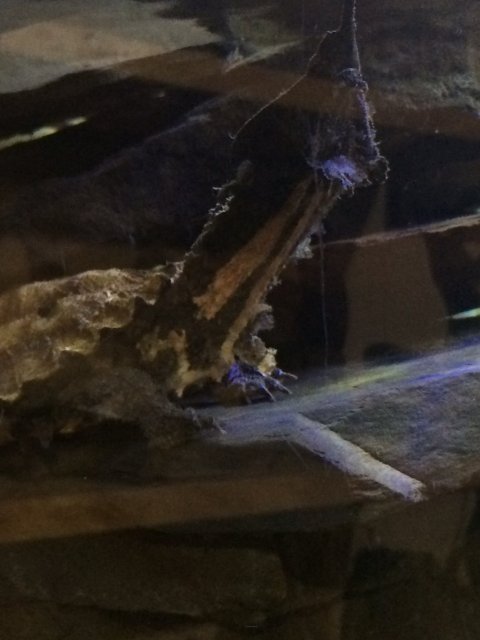
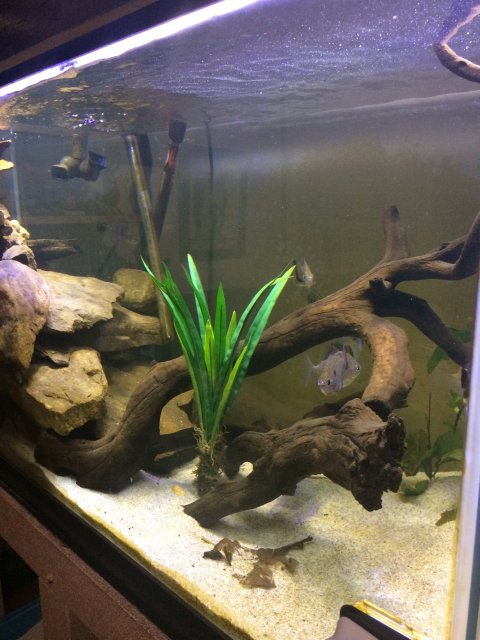
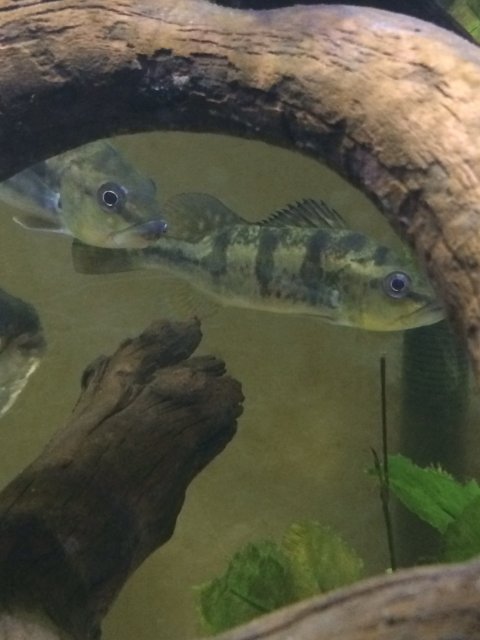
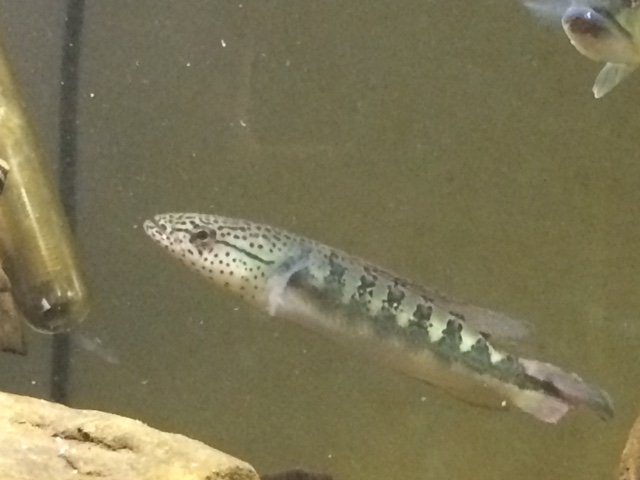




Welcome back! Can we get a full tank shot?I am back to MFK!! Here is my South American setup with a young Mata Mata. PH is 6 and my fish are all happy that way!! the Pikes are new arrivals and the tail on one was damaged a bit...I got a great deal on them and it will heal!! The tank has 300lbs of rock formation providing a walk up for the turtle and caves for the pikes.....they may be fully aquatic but Mata Mata are poor swimmers!! KenView attachment 1333704 View attachment 1333705 View attachment 1333706 View attachment 1333707
Nice!
I keep my musk turtle with 3 large blood parrots a large albino Oscar and a medium size featherfin catfish in a 120 gallon aquarium, I’ve never had an issue with the fish or the turtle being kept with one another.
My softshell on the other hand has had occasional tankmates some lasting longer then others but after he ate 2 yellow labs I moved him from my old African cichlids tank and set up his own tank with native fish they did great together he only ate some of the smaller fish in the tank but after they outgrew the tank I released them back into the creek I pulled them out of.
My softshell on the other hand has had occasional tankmates some lasting longer then others but after he ate 2 yellow labs I moved him from my old African cichlids tank and set up his own tank with native fish they did great together he only ate some of the smaller fish in the tank but after they outgrew the tank I released them back into the creek I pulled them out of.
Never release captive fish into the wild! Except into private ponds not connected to other water bodies, we have a whole thread devoted to this.I keep my musk turtle with 3 large blood parrots a large albino Oscar and a medium size featherfin catfish in a 120 gallon aquarium, I’ve never had an issue with the fish or the turtle being kept with one another.
My softshell on the other hand has had occasional tankmates some lasting longer then others but after he ate 2 yellow labs I moved him from my old African cichlids tank and set up his own tank with native fish they did great together he only ate some of the smaller fish in the tank but after they outgrew the tank I released them back into the creek I pulled them out of.


